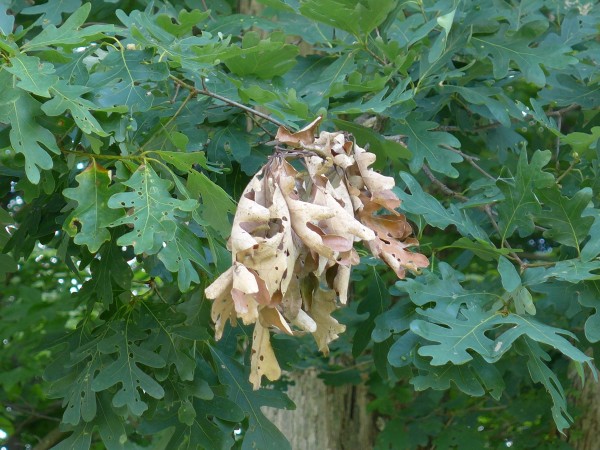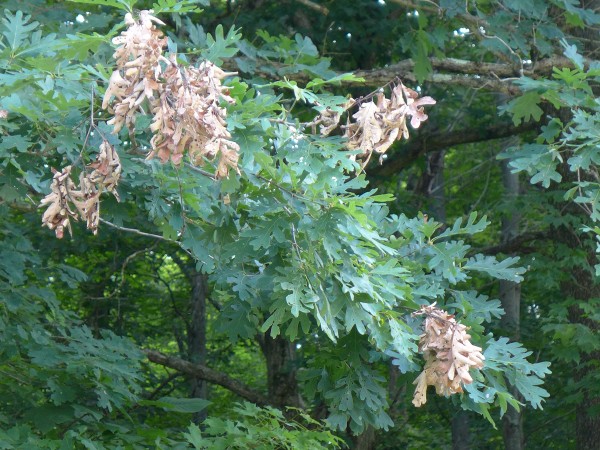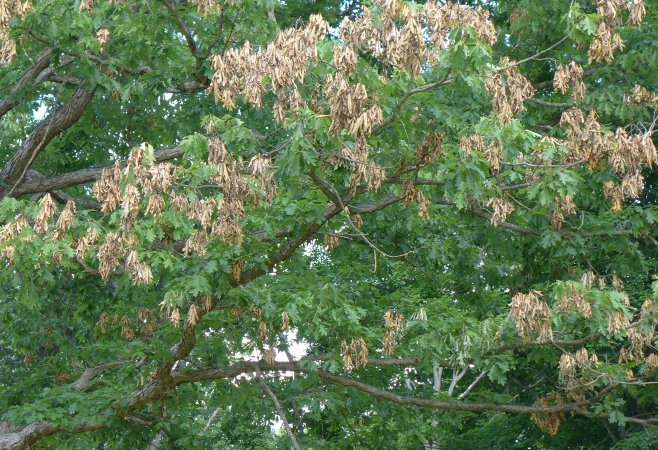
12 July 2016
After weeks of roaring in late May and June, the 17-year periodical cicadas (Magicicadas, Brood V) are gone but not forgotten.
During the mating frenzy the females used their ovipositors to slit the bark near the ends of twigs and deposit up to 600 eggs per slit. Weeks later the adults are dead but they’ve left their mark on the trees. The slits killed the leafy branch tips.
Everywhere you go in cicada country the trees are green inside and brown at the tips. (This is called “flagging.”)

The trees look as if someone has sprayed defoliant on this year’s new growth. Fortunately that’s not the case!

The trees will be fine. They have plenty of time to recover before Brood V reappears in 2033.
If you lived through the cicada invasion this summer, you won’t soon forget their roar.
If you missed them, your next big chance near Pittsburgh will be Brood VIII in 2019.
(photos by Kate St. John)
Looking at that at Washington park yesterday. I thought the brown was cicada eggs but glad for the for the information
There are alot of laid eggs. Wow.
I’ve noticed most of the damage is on Oak trees. Did the cicadas damage other species of trees or was it limited to the oaks ?
Marsha, you’re right. They prefer oaks.
In the part of Beaver Co. where I’m at now, there’s also the huge wasps called Cicada killers. They burrow in the ground. I won’t go into detail, but seeing them flying about carrying Cicadas is a disturbing side of nature. The last bad Cicada year here was 2002. Going into a store I noticed a man in front of me had one on him, (excuse me sir, but you have a Cicada on your back) lol. Oh my, 2019 should prove to be interesting!